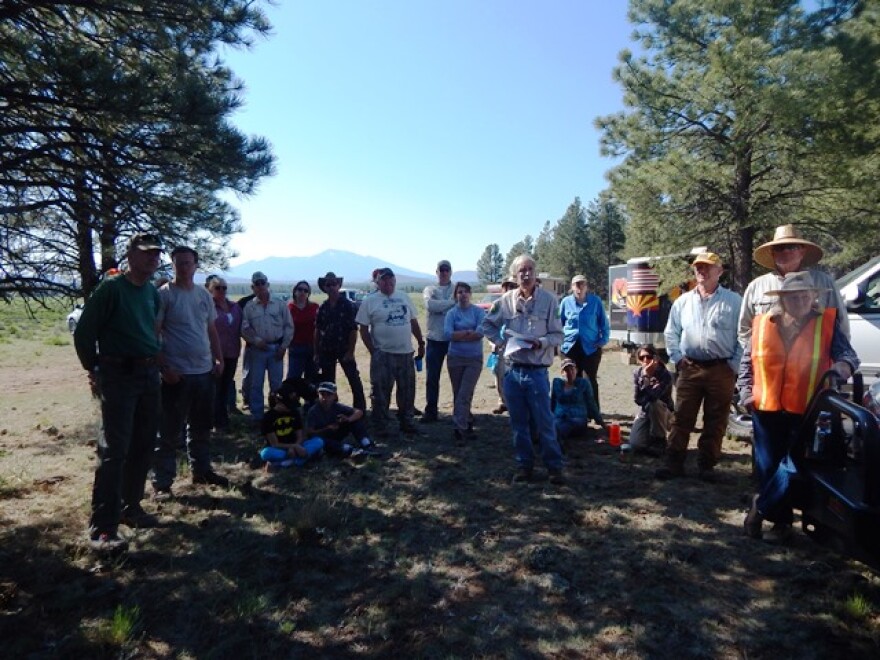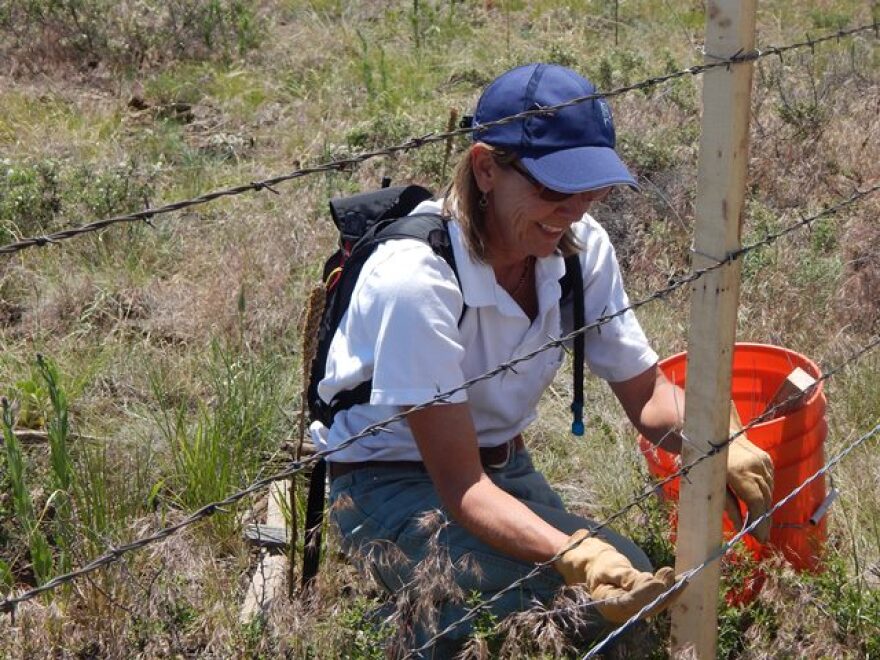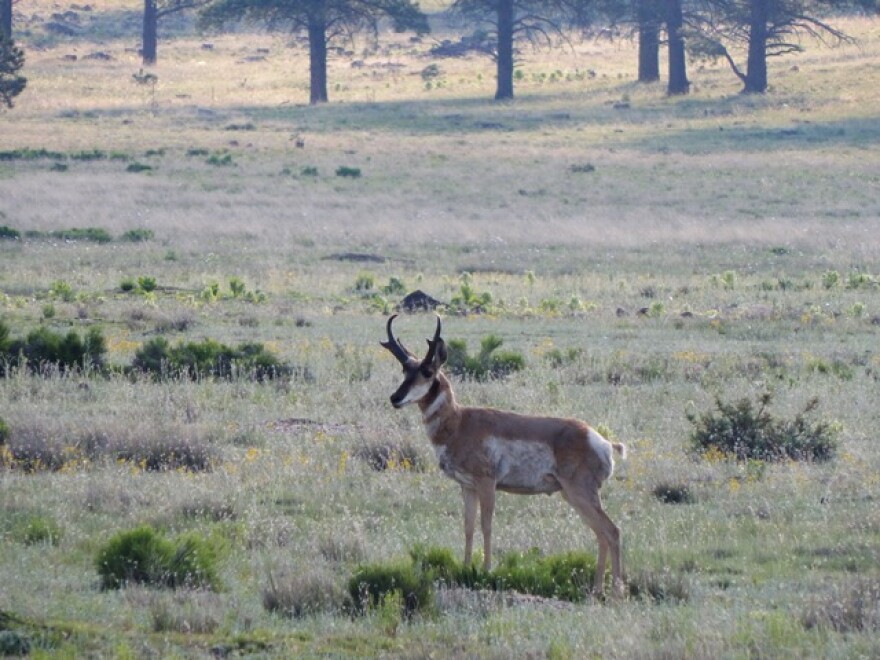Pronghorn antelope are native to the American West. But the landscape they roam is increasingly fraught with peril. Highways and railroad tracks block their movement and make it difficult for pronghorn to find food, water and mates. Even simple cattle fences act as barriers. Now, wildlife biologists and volunteers have created a program to help pronghorn cross those boundaries.
Fifty volunteers gather on a Saturday morning at a campsite north of the San Francisco Peaks. They listen to instructions about today’s project: a custom remodel of five miles of cattle fence.

Everybody’s got a job. One volunteer cuts the bottom strand of barbed wire and lets it falls to the ground. Someone else rolls it up with a chain rolling machine. Finally they stretch a new, smooth wire in its place, 18 inches off the ground. That’s tall enough for a pronghorn antelope to scoot under without getting tangled.

“They’re just a great animal,” said John Hamill, one of the volunteers. “To see them trapped in areas by artificial fences like this, it seems only reasonable to do whatever we can to mitigate that.”
American pronghorn antelope can reach speeds of 60 miles an hour. Only cheetahs run faster. But speed doesn’t help when they come up against a fence. Pronghorn can jump over, but they almost never do. They prefer to go under. When they can’t, they get trapped, fragmenting into tinier herds.

That’s a big problem, according to Jeff Gagnon, a biologist with the Arizona Game and Fish Department. “We found that there were genetically different populations on different sides of highways,” Gagnon said. “So the fragmentation or boxing in that was happening to these animals was actually detrimental to their health.”
In 2007, the Arizona Game and Fish Department put GPS collars on 37 pronghorn in the Wupatki National Monument near Highway 89. Data showed the animals weren’t crossing cattle fences, especially those strung along highways.

But Gagnon had a simple fix. Since pronghorn are only about three feet tall, raising the bottom wire further off the ground might give them a way to get through. When Gagnon tried it, it worked. “Basically we said, if we can get them across [Highway] 89, let’s get them across 89, 180, 64,” Gagnon said. “We call it the Connecting Pronghorn North of I-40 Project.”

Gagnon knew he’d need lots of help to revamp miles of fence line. The U.S. Forest Service came on board. So did the Arizona Department of Transportation and community groups like the Arizona Antelope Foundation. They asked local ranchers for support, since the fence modifications would have to let pronghorn out while keeping cattle in.
That collaborative vision is what brought John Hamill and other volunteers out here today. “There are solutions,” Hamill said. “This isn’t about wildlife verses development; it’s about trying to provide opportunities for both.”
Ultimately, Game and Fish imagines a wildlife overpass that would let pronghorn safely cross Interstate 40, reuniting the Grand Canyon herds with those as far south as Prescott Valley.








